Introduction

The Zeiss ZM 35mm 1.4 T* Distagon has often been referred to as being one of the best 35mm lenses available, combining high sharpness as well as microcontrast and smooth bokeh in a small yet very pricey package. But is this still the case in 2023?
Update March 2023: general update
Sample Images
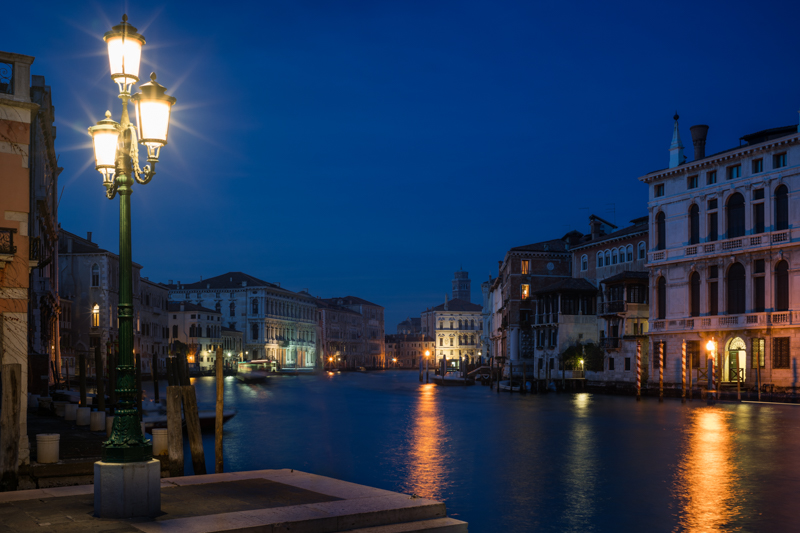


This lens was also featured in my fast 35mm manual focus lenses comparison you might want to have a look at.
Contents
Specifications / Version History
The ZM 35mm 1.4 T* Distagon is the latest addition to the ZM/Ikon lineup by Zeiss, introduced during Photokina 2014. This lens features a very complex retrofocus design: 2 aspherical elements, 3 anomalous partial dispersion elements, floating elements, you name it. The lens has the following specifications:
-
- Diameter: 63 mm
- Field of view: 62.15° (diagonally)
- Length: 87 mm
- Weight: 381g + adapter
- Filter Diameter: 49 mm
- Number of Aperture Blades: 10 (straight)
- Elements/Groups: 10/7
- Close Focusing Distance: 0.7 m (~0.3 m with VM-E helicoid adapter)
- Maximum Magnification: 1:16.9 (~1:5.7 with VM-E helicoid adapter)
- Mount: Leica-M
You may also have a look at Zeiss’ official page.
New this lens costs as much as $2390/1999€ on amazon.com/ amazon.de/B&H, I would recommend getting one used from ebay.com starting at $1500$/1500€ (affiliate links)
Handling / Build Quality

Build quality is very nice, as is to be expected from a lens with such a high price tag. It feels very solid as it seems to be an all metal construction, which of course also adds to the substantial weight of the lens. The aperture ring has distinct 1/3 of a stop click stops and travels ~120° from f/1.4 to f/16. Personally I would prefer full or at least half stop click stops, but that might just be me. The focus ring feels very nice and from the minimum focus distance of 70 cm to infinity it travels 90°.
Unlike most rangefinder lenses this one features an internal focus mechanism, meaning nothing moves externally when focusing. There is no hood included in the package which is a bit ridiculous considering the price of the lens, but we will check later if a hood is actually necessary in the first place.
I didn’t have an M-mount camera the time I owned this lens but I expect significant viewfinder blockage.
Vignetting
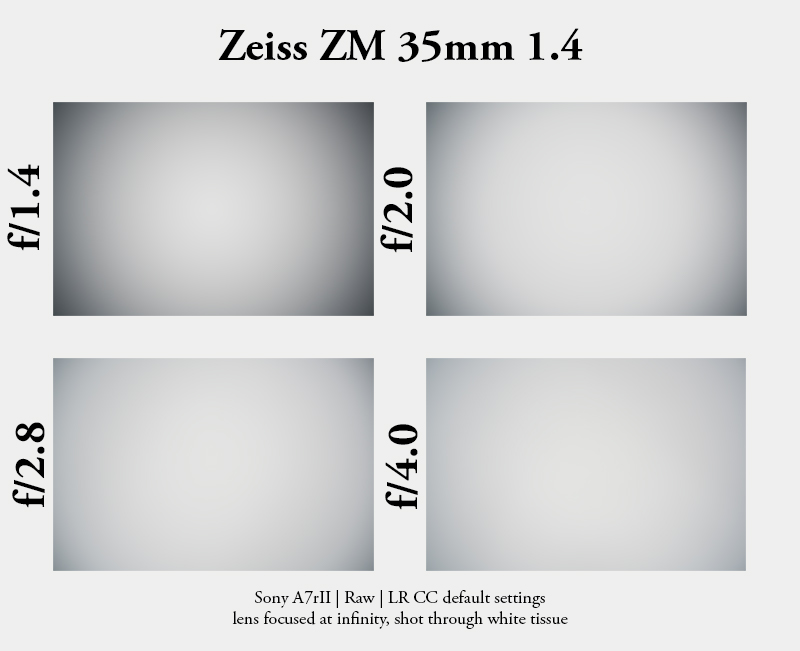
Wide open there is strong vignetting of roughly 3.1 EV, stopped down to f/2.0 it improves to 2.3 EV, at f/2.8 it is 1.7 EV and at f/4.0 still 1.2 EV. This is not an unusual performance for a rangefinder lens with these parameters, but the small diameter certainly takes it’s toll here. There is a Lightroom lens profile for correcting the vignetting.

It is recommended to have a look at this article first to get an idea how this brightness graph works.
Unlike with many other rangefinder wide angle lenses I can barely see a color cast towards the edges with the A7rII and the A7s.
Sharpness
infinity
The ZM 35mm 1.4 is a rangefinder lens developed for the Leica-M digital cameras, therefore it is not optimized for the thick filter stack in front of the A7 sensors which leads to some problems, especially a significant field curvature. This means for a flat subject when focusing at the center of the frame the corners will look blurred.
This is not the lenses fault as you can focus on the corners and still get decent sharpness at f/1.4 there, but your center will be blurred then. By f/8.0 you will be able to get excellent performance across the frame though. That being said, there are many cheaper 35mm lenses available that can achieve good across frame performance at f/8.0.
Furthermore you can improve the corner performance of rangefinder wideangle lenses on A7 series cameras by the use of a 5m PCX “front end filter”, see this article for further reference. This filter has a dramatic influence on the across frame sharpness, as you can see here:




Unfortunately the use of a 5m PCX filter will give you slightly worse resolution in the midframe wide open, but already by f/2.8 you can get very good across frame sharpness which is otherwise not possible with this lens on an A7 camera as you can see above.
close focus (70 cm)

At the native minimum focus distance of 70 cm there is nothing to complain about, good at f/1.4 and very good by f/2.0.
close focus (30 cm helicoid adapter)

If you reduce the minimum focus distance with a helicoid adapter (like I did here with the Voigtlander VM-E close focus adapter (affiliate link)) the image gets a bit soft at f/1.4 and f/2.0 but improves considerably on stopping down to f/2.8. Keep in mind the lens was never intended to be used at these focus distances by the designers.
Flare resistance

Kind of a mixed bag as with most lenses. The shot above is the worst I could produce showing some small ghosts. With a different framing (shot below) I could completely avoid them. A hood wouldn’t really help here, as I tried shading the lens without success.

Coma
Because of the field curvature caused by the thick filter stack in front of the sensor this one is hard to address properly. In case you have been paying attention in the Sharpness section you already know: you can’t get great performance wide open in the center and in the corners at the same time on an A7 series camera. So we will again differentiate between focus on center and focus on corner.
Wide open coma performance isn’t particulary great, regardless of where your focus is set to. Same goes for f/2.0 and f/2.8. When focusing on the corner, by f/4.0 things start to look good, when focusing on the center it takes f/5.6 for the corners to be mostly free of coma. This is not a lens you would want to use wide open for astrophotography or cityscapes.
Distortion
There is very slight barrel distortion which I would describe as mostly negligible. You can also use a Lightroom profile to correct this if necessary for critical shots.
Bokeh

As this lens design incorporates 2 aspherical elements I was a bit skeptical at first, but when comparing this lens to the Loxia 35mm 2.0 you see things are not always just black and white: the ZM – despite the aspherical elements – has much smoother bokeh than the Loxia without aspherical elements. There is slight outlining and at 100% magnification you might even spot some subtle structure in the light discs. The cat’s eye effect – describing light discs becoming ovals towards the borders and corners – is also quite pronounced. Still, many 35mm lenses fail badly in this category. Take a look at the sample images and decide for yourself.
Unfortunately the field curvature can also have negative influence on the bokeh. While in the center of the frame everything is alright the blur lessens towards the borders. Have a look at the tree branches on the left, where the one towards the border looks less out of focus. Same goes for the bridge on the right, whereas here the effect is even stronger, as the right part of the bridge is in fact also closer to the camera. This only happens at longer focus distances.
This issue can also be mostly solved by the use of a 5m PCX front end filter, as I have shown in this article.
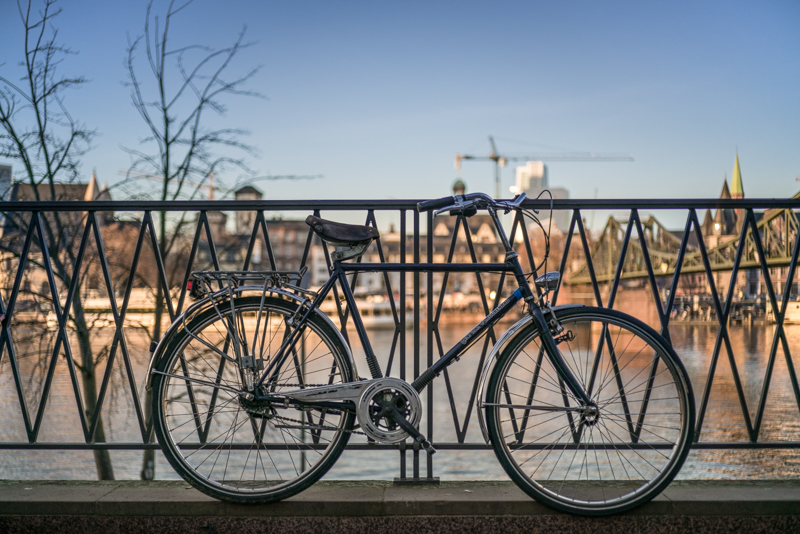
In close up shots you will rarely notice this:

Sunstars

The ZM produces the same beautiful 10-stroke sunstars as do the Loxia or the newer Voigtlander lenses.
You can also see in this article what influence the aperture diaphragm has on how these sunstars come out.
Chromatic aberrations
longitudinal
Longitudinal CA (loCA) are definetly present wide open, much better stopped down to f/2.0 already and hardly field relevant from f/2.8 onwards. I would describe the performance here as average, there are very few 35mm lenses with a maximum aperture of f/1.4 that perform better. Below is a real world “worst case” example. As you can see in the following before/after comparison you can still correct this with Lightroom, but this may not be possible for every shot without sacrifices.

Alternatives
E-mount
When I bought this lens in 2016 there weren’t any high quality native 35mm f/1.4 lenses for E-mount available. Now in 2023 the situation is dramatically different. You can find all native 35mm lenses discussed in our Guide to 35mm lenses for fullframe E-mount cameras.
Be sure to check out the Sony FE 35mm 1.4 GM, it is only slightly heavier than this Zeiss lens while offering superior performance and even AF and all that for a lower price.
M-mount
Among M-mount users the size of this Zeiss ZM 35mm 1.4 has always been a matter of discussions and if I am not mistaken this still is the biggest and heaviest 35mm f/1.4 M-mount lens in 2023.
You can find all my reviews of several 35mm M-mount lenses here.
These days I am mainly using the Voigtländer VM 35mm 1.2 III Nokton on M-mount cameras as it is better balanced thanks to being smaller and lighter. On top of that it is also half-a-stop faster. If you care more about high sharpness than the most impressive maximum aperture the already discontinued Voigtlander VM 35mm 1.7 Ultron is also worth a closer look.
Conclusion
good
|
average
|
not good
|
E-mount user
Let’s face it: in 2023 and counting there is hardly a reason anymore to get this pricey lens for your fullframe E-mount camera. The Sony FE 35mm 1.4 GM will offer the more compelling package to a vast majority of users. If you really like manual focus and you are looking for maximum image quality consider having a look at the Voigtländer 35mm 2.0 Apo-Lanthar E, if you care more about speed there is also the Voigtländer 35mm 1.2 Nokton SE.
M-mount user
Since the introduction of this Zeiss ZM 35mm 1.4 in 2014 many compelling 35mm lenses have been released for M-mount. Back in the day I didn’t have an M-mount camera, but this has changed and – for me personally – I would also consider this lens to be too big and too heavy for regular use on an M-mount camera.
I also think this Zeiss ZM 35mm 1.4 is priced too high compared to the new Voigtländer lenses. For the price of this lens you can get the Voigtländer VM 35mm 1.2 III and the Voigtländer VM 35mm 2.0 Apo-Lanthar, ending up with one lens that is faster and has nicer bokeh and another lens with impeccable image quality from f/2.0.
I also put my money where my mouth is: I sold this lens when better options for E-mount became available and when I want to use a high quality 35mm lens on my M-mount cameras I pick the Voigtländer VM 35mm 1.2 III.
New this lens costs as much as $2390/1999€ on amazon.com/ amazon.de/B&H, I would recommend getting one used from ebay.com starting at $1500$/1500€ (affiliate links)
Sample Images



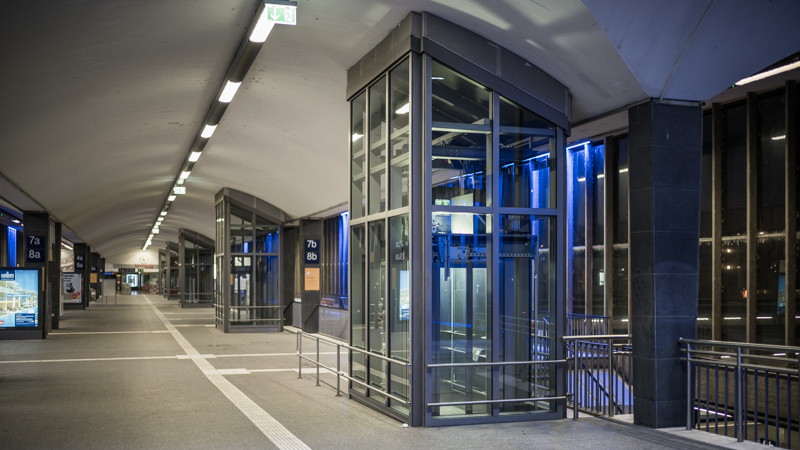




Further Reading
Support Us
Did you find this article useful or just liked reading it? Treat us to a coffee!
![]()
![]()
![]() via Paypal
via Paypal
This site contains affiliate links. If you make a purchase using any of the links marked as affiliate links, I may receive a small commission at no additional cost to you. This helps support the creation of future content.
Latest posts by BastianK (see all)
- 2025 – Year in Review - December 23, 2025
- Review: Sony FE 70-200mm 4.0 G Macro OSS II - December 20, 2025
- Review: Viltrox AF 35mm 1.2 FE LAB - December 17, 2025










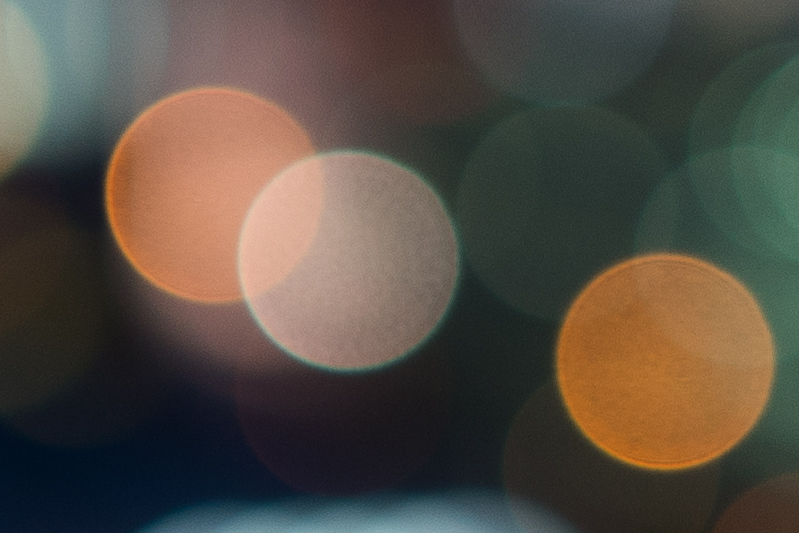




Nice review! While the FE 1.4/35 ZA is indeed prone to onion rings, everything else about its bokeh is nicer than any other fast 35 I’ve used or seen; just no nervousness and a wonderful smoothness. It’s magic. Of course it’s a ton bigger than the ZM..
Thanks for a great article, clear, easy to read,to the point.
I can say that I am super happy with mine on Techart adapter (TAP)(shortens the MFD as well) . The 35mm FOV with fast aperture is magical, however I am using it stopped down a little (just notch below f2).
Having said that that Voigtlander 35/1.7 is perhaps is very strong competitor. As a former MF freak I hate a new design of focusing ring (uncomfortable-same as on 50/1.5 sibling),so I never purchased it ,but now with TAP I will.
Looking forward to do comparison between these two little gems.Cheers,Rado
Hi BastianK, I’m the one who got the PCX10M before you do. I tested this filter on the Zeiss ZM 35/1.4 at mid-distance around 8-10m and I am not impressed with the result. You can see the full size images at my Flickr from the link below.
https://flic.kr/s/aHskRLu6Mg
Dear Teera,
thank you very much for sharing these unfortunate results with us!
Hi Bastian
I first became aware of the high reputation of the ZM351.4 on Lloyd Chambers site but noted his comment that it wasn’t suitable for the A7 series due to the cover glass thickness.
Later when the front-end filter thread got some momentum on FM my interest was piqued sufficiently to invest the not inconsiderable sum of £1,500 and the £100 needed to purchase the 5m PCX from Laser2000.
I was very impressed with the micro-contrast of the lens in the centre even wide open both with and without the front filter.
However, I found that the mid-range dip with the filter was even worse than had been described on the FM forum although the definition on the very edge of the frame was remarkable. Stopping down 2-3stops was the minimum necessary in both cases but f5.6 was necessary for a good even performance across the frame.
I also tested the lens at 8-10 metres and sketched the results in Excel (2 dimensions only!) and it was apparent that the correct answer was exactly in the middle for a totally flat field.
Your correspondent’s results above notwithstanding I was sufficiently encouraged to invest another (and final!) £150 in the EKSMA 10m PCX.
The results have exceeded my expectations.
f1.4 has a very modest (10% of previous) midrange dip, F2 is excellent and barely visible at all unless at 100% in C1 and from f2.8 pixel peeping is fine.
After keeping this to myself for a little while I thought I should pass this on as many people invested time and effort to try to achieve this sort of result.
Thanks for sharing your experiences!
Would you mind sharing a few shots?
Thanks for the info John, I’d like to try this too. I’m a bit confused about which filter is the right one on the EKSMA website, is there a product number for it?
OK, Bastian, I’ve had a go, first time for me.
https://www.flickr.com/photos/148458691@N02/with/40228088605/
The photos represent the left half of the frame with focus on the end of the small pebbled path i.e. centre of the frame (9-10 metres away). They are shown in the opposite order to what I wanted, there are 3 groups of seven.
1st 7 – with 10m EKSMA PCX taken Jan 18 from f11 to f1.4
2nd 7 – with 5m Opto-Sigma PCX taken March 2017 from f11 to f1.4
3rd 7 – lens on its own from f11 to f1.4 also taken March 2017
Hi Tim
The notation on my invoice was:
BK7 pl/cx lens D50.8mm F = 10000mm AR/AR400-700
110-0565E+3217i0
Bastian,
Always a pleasure. For my A7r3, I am deciding between the native Sony/Zeiss 35mm 1.4, and this ZM 35mm 1.4 Distagon (M mount). Both the lens’ size and AF/MF are not an issue for me, and I also have a TAP AF adapter.
What would you recommend? My main uses are in home candids of family and my new baby, travel and various festivals around New Orleans. Really very seldom do I take a landscape shot (so corners may not be too important for me).
I’m curious as to what would be better for IQ, sharpness, color rendering, and the Zeiss “pop”? I have both in my BH photo shopping cart and I can’t make a decisions!
Thanks,
Newt
Dear Newt,
I am not the biggest fan of the early ZA lenses (Sony/Zeiss 1.4/35 falls in that category):
the focus ring bothers me quite a lot, the lens has significant onion ring bokeh and huge sample variation.
I already tried getting a review sample nevertheless, but so far I wasn’t lucky enough to get a well centered one which I could use for a review.
In terms of bokeh, especially transition zone, the Sony/Zeiss should have smoother rendering though.
It depends a bit on your personal taste whether you prefer a smoother transition zone or no onion ring bokeh.
In terms of color rendering I found the ZM lenses to be slightly warmer than the ZA lenses. This could be adjusted in post of course.
LoCA shoud be better corrected on the ZM.
3D Pop is hard to evaluate without having shot the same appropriate subject with both lenses.
I have seen great images from both lenses.
Bastian,
It’s great to see how you and your colleagues are so accessible in responding to us commentors. Thanks for the reply. As I may not have the time to spend (nor really the skill) assessing the sample quality of a Sony 35/1.4 and possibly returning the lens, I do lean towards the ZM 35/1.4. I also am a bokeh fan, even with wide angle lenses like this. Great to hear your take on the bokeh vs transition zone quality of both lenses. Also I am enamored with the possibility of one day having an M10!
Thanks for the advice!
Bastian
All these articles about range finder lenses lead me to just purchased a Leica MP240 with the 35/1.4 Distagon ZM. The lens is great on the Leica, extremely sharp WO, easy to focus, not too big, and built like a little brick. I have not tested yet on the Sony (will share impressions ASAP when the vm-e adapter arrives). Awesome lens though, definitely sharper than the 50/2 Summicron.
It would be very interesting to use this lens on the A7III as there the perceptive layer is on top of the sensor instead of the bottom.
I have applied the pcx5m on my old c/y 35/1,4 and also there, on my sony A7, is a strong improvement in the peripheral fields with slight loss in the center, not noticable from f2,8.
As I work only with manual old zeiss c/y optics I consider buying the A7 III….
Maybe vignetting will be 0.1 to 0.3 stops less, apart from that no differences compared to what you see on the A7rII here.
I am a landscape photographer. I am looking for a GREAT 35mm landscape lens. I do not use bokeh in my images. I have been using the Sony A7RII for several years, and will probably go for the A7RIV. I understand you technique of focusing at f/5.6 to get the proper plane of focus. I don’t understand the cover lenses (EKSMA 10m PCX). I focus stack, when possible, using my Sony 24-70 f/2.8 lens when at 24mm or 35mm at f5.6. I want the greatest depth of field I can get with close focusing. Is the Zeiss a lens I should look into, or am I better off staying where I am with what I am doing.
That is not an easy question to answer.
I actually do wonder why you chose the 2.8/24-70 GM in the first place, as the only reason to get it is being faster (which apparently you don’t need) and its nicer bokeh rendering (which you also don’t need) compared to slower zooms.
I compared several manual 35mm lenses here.
Best for landscapes (best contrast and across frame resolution):
Zeiss ZM 35mm 1.4 + 5m Optosigma PCX filter (find out more in this article) at f/4 to f/8.
Zeiss Loxia 35mm 2.0 at f/8 to f/11.
Thank you BastianK. I purchased the Sony 2.8/24-70GM right when it came out. It is much better than the Sony f/4 version. I use the 24mm and 35mm focal lengths at f5.6 and shoot 3 shot focus stacks when possible. The images are very detailed and sharp. I also have a Zeiss 3.4/35-70 C/Y that is also very sharp at 35mm and has better contrast and color than the GM lens. I have been looking for a 24mm with the Zeiss characteristics. I inquired about the Zeiss ZM 1.4 because it has intrigue me since coming out. I am not sure if it is a step up from what I have or not. I have tried the Loxia 35mm, but I don’t like the UI. Thank you for your input.
I am sure you will see a difference, whether that difference is worth the asking price is another matter though.
Thanks for the very detailed review of this beautiful lens. I have been thinking for quite a while about Kolari’s tempting UT modification for an a7RIII. I think Sony’s 42,2mpx sensor allows to take full advantage of both ZM and VM lenses, with a performance not available on any Leica digital camera, and could be a good alternative for building a stellar and unique compact kit.
I was wondering if you have any experience with the UT modification, and if it improves on the Optosigma PCX filter.
Cheers!
Maybe you find the answers you are looking for in this article.
Thanks, I had not seen this interesting article.
I forgot to ask if you have experience with the Zeiss Biogon 2.8/35, and if the performance of this smaller lens at half the cost offers a worthy alternative. On paper it looks the part.
Cheers!
Never tried that lens.
Thanks for your review and for your continued attention to the resulting comments, Bastian.
Your tests (and your helpful illustrations) suggest that adjusting for depth of focus could ameliorate many of the problems that this lens has with the Sony sensor for landscape use.
I recently purchased the ZM 1.4/35, thanks in large part to your reviews. I like it, although it is quite unlike my favorite sharp-to-the-corners landscape lens, the Loxia 25mm. The degraded corners on my A7R III don’t really bother me in my planned and typical use of the 1.4/35, but, while your suggesting focusing technique is quite helpful for single exposures, I thought that it might be worthwhile to try to avoid impending diffraction limits by shooting at an optimum aperture and focus stacking for handheld landscapes.
I downloaded trial versions of two prominent focus-stacking programs (Helicon Focus and Zerene Stacker) last weekend, and it doesn’t seem that it would be difficult to merge two or three handheld exposures to optimize sharpness–although I’m still bumbling along and it’s too early for me to tell. I first tried to merge two similarly-focused handheld images (one at an “optimum” aperture and another closed down to compensate for the corner issues) with limited success; today’s attempts with refocusing at a sharp aperture (I used f/5.6 in my initial trials) seemed to work better.
Have you or your co-authors tried this with this or similar lenses–or is it even worth trying?
Hi David here.
I guess I might be the one of us who does the most focus stacking.
Certainly the sort of thing you suggest should work.
What I sometimes do is use the optimum aperture, focus one exposure for corners and another for the centre (assuming the landscape is an infinity one). This works perfectly on a tripod. Or one centre and one midzone, if it’s a midzone dip lens. No need to use a small aperture.
I use Zerene, though Helicon is likely as good. But if you are hand holding it’s anyones guess which will work better. Sometimes Photoshop align and blend works better, sometimes zerene pmax, sometimes zerene dmax. It seems to depend on precisely how your hand movement between frames interacts with the detail in the image. So it’s a lot of work, but if the image has huge potential and you can’t to make a great print, it’s worth it.
Hi, looked at John Cuthbert’s comparison pics between the naked lens, with OptoSigma 5m and Eksma 10m (many thanks for keeping the link alive) and, save for the different lightning, it looks to me that the ones taken with the Eksma PCX 10m have a bit more “bite” (especially in the midfield) vs the OptoSigma 5m’s ones. Unfortunately they are not downloadable so they cannot be blown up too much for further scrutiny, but at least to my eyes the diffirent in the upper midfield zone) i.e. the patch of grass on the right and the tarmac structure looks anyway quite apparent).
Any thoughts/experience on that? I’ve seen that previously another user was reporting not being impressed by the Eksma 10m, but unfortunately the pics are no more there to check, while in the other comprehensive article about rangefinder lenses and pcx filters, Bastian itself posted some tests with the Eksma filter claiming he was not satisfied due to a more pronounced midfield dip, but the filter was referred as Eksma 5m, not 10m.
So at the moment a bit undecided if to go the tried and tested OS 5m route or the Eksma 10m one..
Are those samples in the sample gallery with or without a pcx filter?
Without.
Thanks – looks good enough without it for my purposes
This is the ultimate modern 35mm 1.4 lens for a Leica m-mount camera, which is exactly what it was designed to be.
This website goes into such detail when reviewing these lenses, that they should really have the native body for comparison also.
This would show what the brilliant engineers were able to create for the compact range finder camera community.
Is that an offer to sponsor us a M10? Gladly accepted!
You could purchase a full frame Leica M240 for £2k with 6 months Warranty.
I think it would certainly increase the numbers that visit your website.
The growing Leica community would appreciate your no nonsense style.
I moved to Leica after owning m-mount lens for my A7RMKII, I think it’s a common progression for this generation of photographers.
I am not convinced this would make sense from a business standpoint since time invested in M-mount couldn’t be invested in E-mount where we have a much bigger base. That would leave passion as a motive and I am certain i wouldn’t enjoy that M240 much.
Well today I’m carrying a Sony A7RMKII with a Voigtlander 65mm Lanthar and an M10p with a Zeiss 35mm 2.8 Biogon and I’m passionate about both of them equally.
I was sceptical about having a range finder but there is no doubt once you master the focusing you can get equally sharp pictures just as quickly, even when they are fast moving things, like my kids : )
Don’t be put off by the snobbs who by them for badge, there enjoyable and satisfying to use.
I am sure shooting a rangefinder can be enjoyable but it is not for me 😉
Obviously you need to play with one before you say ‘it’s not for me’.. Otherwise you obviously have some unrational bias against them.
Okay I’ll move on now, Keep up the good work ?
“4 tips to improve your astro photography” link sends me to this lens review.
From which page?
Hi Bastian,
Just picked one of theses up with a PCX filter. Before it arrives, does it matter which alignment I place my PCX between the step up rings? i.e. which side is supposed to face the front or the sensor.
Also, wouldn’t a 49-52mm step up ring alone work with the PCX and retaining ring instead of a 49-55+55-52, which I have set up per instructions?
Thanks a ton
Which side faces the front does not make a noticeable difference.
You can try with 49-52mm only, but it will most likely be too short and you will loose the option to add other filters later.
Hi Bastian,
Have you tried ZEISS ZM 1.4/35 Distagon on Nikon mirrorless cameras (Z6/Z7)? The filter in front of Nikon sensor looks thinner than Sony. So, the issue of fileld curvature may improve.
I am a Sony user for 7 years and I enjoy rangefinder lenses. But the corners of Sony cameras with M lenses have been puzzled me a lot. I am considering other brands such as Nikon/Canon/Sigma. Would you like to make some tests of M lenses on others if you are free?
Thanks
I have no access to a Z camera, therefore I cannot evaluate the field curvature issues on those cameras.
Indeed I also read they perform better than on stock Sony though.
PS: The current line-up of Z lenses is of little to no interest to me, therefore I doubt that I will acquire a Z camera any time soon.
i own and I enjoy this lens already several years. Before to buy it I used the Voigtlander Nokton 35mm f1.2 II and I had many nice pics with it but when I tried the Distagon it was like I didnt see anything till that moment during my entire life. It’s an amazing lens. Period. Probably the best 35mm ever. It is not perfect (it was not meant to be it) but it is a piece of glass which gives its own signature to each photo and gives a huge amount of emotions using it. Probably it is not the best choice for landscapes but for street and street portraits it is a step above all other 35s.
I used it on digital M cameras, on Fuji x APSC cameras and, during the last 3 years, on Sony A7 series cameras.
I’m not a 35mm guy. Actually I prefere 28mm and 50mm but i still keep and use this masterpiece and it will remain with me till the end. Also the build quality is amazing. It is one of the few manual lenses for M mount with internal focusing movment. Of course everything I wrote is according to my kind of photography activity. on the base of this I can say I see only one downside in this lens. The 0.7m of minimum focus distance (almost a standard for M lenses). Being a 35mm I would like to get closer to my subject,sometimes. Anyway I would advice this Distagon to everybody who wants a magic 35mm for street photography.
Max
P.S. thanks for your amazing reviews. They are a mine of knowledge!
I am glad you enjoy the lens, and thanks for your kind words!
Hi Bastian, I have heard really good things about the Zeiss 35mm F2 ZE/ZE2 Distagon T* It’s a but cheaper than the 1.4 and I’ve heard people say it’s the best lens they own but I don’t know how it would perform on the sony. Do you think it would suffer from the same issues as the 1.4? Do you have any experience with it?
Being a (D)SLR design the 2/35 ZE should not have any issues with filter stack induced field curvature.
Looks like a decent lens but I have no personal experience with it.
Vielen Dank für das ausführliche Review!
Ich stehe gerade zwischen der Entscheidung das ZEISS Distagon 35mm f1.4 ZM oder das Voigtländer 35mm f1.2 III für meine Leica M10 zu erwerben.
Das ZEISS hatte ich bereits besessen und war begeistert von der optischen Performance. Das Handling hat für mich gepasst aber natürlich wäre mir ein kleineres Glas lieber aber das trifft auf so ziemlich jedes Objektiv zu. Der Verkaufsgrund war eine kurzfristige, sehr hohe Reparaturrechnung meiner Leica.
Deshalb kommt das Voigtlander 35mm f1.2 III ins Spiel und ich würde gerne wissen ob die beiden Objektive vergleichbar sind (das Review dazu habe ich bereits gelesen). Gerade was Schärfe und Bokeh angeht, auch ob das Voigtlander einen ähnlichen „Pop“ bietet. Und wie passt es an der M10, ist sie genauso wie mit dem ZEISS kopflastig (kippt auf dem Tisch nach vorne)?
Viele Grüße!
Ich selbst nutze an der M10 das VM 35mm 1.2 III da es erheblich kompakter ist und dadurch viel besser zur M10 passt. Bokeh besser beim Voigtländer, Schärfe abgeblendet beim Zeiss.
Vielen Dank für die Antwort! Wie verhält es sich mit Glows und der Auflösung? Bei Voigtländer habe ich immer die Erfahrung gemacht, dass gerade der Randbereich sehr unscharf gerendert wird.
Ist die Schärfe bei f1.4 wirklich „identisch“, weil dann wäre das Voigtländer wirklich „knackig“?
Zu beiden Objektiven gibt es hier sehr detaillierte Reviews.
Schau sie dir an und triff dann deine Entscheidung, die kann ich dir nicht abnehmen.
Mir klingt es eher danach, dass du eh das Zeiss willst und nur noch nach einer Bestätigung suchst.